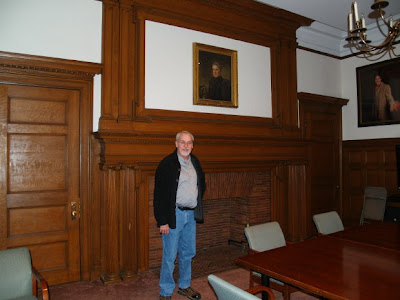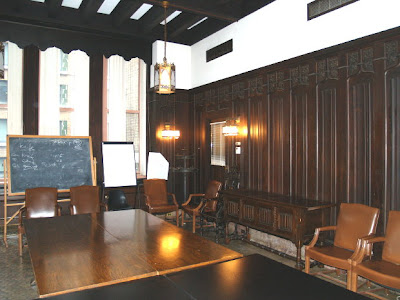 I am back home from New York City and had great time with friends, with my wife Jean and daughter Lucy, and it was a special pleasure to visit a few special places. First, and foremost, I enjoyed my visit to Teachers College. Even though the Macy Manual Training Hall is now covered up on three sides, and thus obscured from its once central mission, there is a Chinese saying that if you want to know how something will turn out, look at its origins. For in the first notions of a thing are expressed its deepest meaning.
I am back home from New York City and had great time with friends, with my wife Jean and daughter Lucy, and it was a special pleasure to visit a few special places. First, and foremost, I enjoyed my visit to Teachers College. Even though the Macy Manual Training Hall is now covered up on three sides, and thus obscured from its once central mission, there is a Chinese saying that if you want to know how something will turn out, look at its origins. For in the first notions of a thing are expressed its deepest meaning.To me that means that the Macy, now buried at the heart of Teachers College will serve again in some of its oldest ways. Does that mean that it may once again look at manual training as a means through which to address the character and intelligence of our nation's children? Perhaps.
We have this idea that when a man makes something, it is the thing that is made, when in reality, it is the maker that gains most in substance and meaning. In the photo above are the stone tools of Henry Boll, preserved in a display case at Grant's Tomb. I am pleased that the National Parks Service offers recognition to one of the craftsman who built the monument. It is a tragedy, however, that our nation's elite, those who make the big bucks, are often so out of touch that they fail to perceive how this process works. Put someone to work learning skill of hand, eye, heart and mind, and you have taken part in transformation of individual and culture, and to feel one's potency in transformation is a far greater personal experience than that of having money in the bank. So how do we begin a new course to make certain that our best and brightest are equipped in heart and mind for a restoration of values and culture?
I think of this process as affirmative action for the hands. Give all young women and men the challenge of serving others through creative hand work. Make it a part of each student's education so they will understand their own potential and the potential that the hands offer their learning. Thus restore the dignity of labor, and you will witness transformation. That was one of Felix Adler's principles in the formation of the Workingman's School, now Ethical Culture Schools in New York City as in the photo below, 33 Central Park West. There, you will find the original noble impulse buried behind a pretentious facade and woodworking only taking place grades 1-4.




























